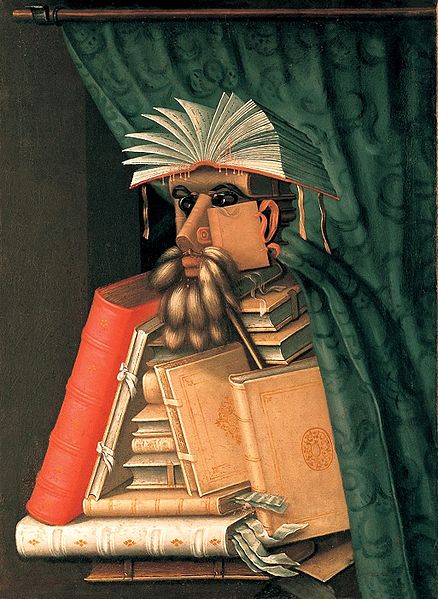
Image credit: Wikipedia
I'll test my art history chops today (no promises) as I explore the work of Giuseppe Arcimboldo (1527-1593), late Renaissance Mannerist and an artist of interest to everyone from the critic Barthes to the stadium rock band Kansas to the surrealist Salvador Dali.
The designer(s) of this year’s TILTS symposium flier chose an engraving after Arcimboldo’s The Librarian (1566). In investigating some context for the painting, I couldn’t help but notice the aptness of the image—not only, of course, because of TILTS’ ever-present commitment to textual studies, but because of the particular place Arcimboldo holds in literary and popular imagination in the Post-Renaissance world.
Recent comments
2 years 29 weeks ago
2 years 44 weeks ago
2 years 44 weeks ago
2 years 50 weeks ago
3 years 4 weeks ago
3 years 4 weeks ago
3 years 4 weeks ago
3 years 6 weeks ago
3 years 6 weeks ago
3 years 6 weeks ago